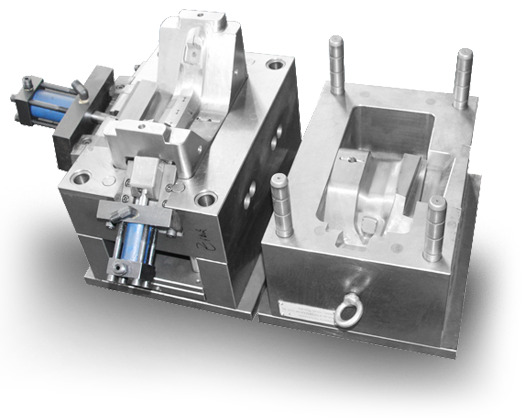Se questi problemi si verificano nella lavorazione CNC, come affrontarli?
2020-03-28Ho riscontrato alcune condizioni anomale durante la lavorazione CNC. Se dovessi affrontarlo, ora lo condividerò con tutti ~~
Innanzitutto, il pezzo in lavorazione viene tagliato:
the reason:
1, the knife, the strength of the tool is not too long or too small. Causes the tool to bounce.
2. Improper operation by the operator.
3. Uneven cutting allowance. (Eg: 0.5 on the side of the surface and 0.15 on the bottom)
4. Improper cutting parameters (such as too large tolerance, too fast SF setting, etc.).
migliorare:
1. Use the knife principle: it can be big or small, short or long.
2. Add a clearing angle program, the remaining amount should be as uniform as possible, (the remaining amount on the side and the bottom should be consistent).
3. Reasonably adjust the cutting parameters and round the corners with large margins.
4. Using the SF function of the machine tool, the operator fine-tunes the speed to achieve the best cutting effect.
Two points:
il motivo:
1. The operator is inaccurate during manual operation and the manual operation is incorrect.
2. There are burrs around the mold.
3, the sub-rod is magnetic.
4. The four sides of the mold are not vertical.
migliorare:
1. Manual operation should be carefully checked repeatedly, and the division should be at the same point and the same height.
2. Use a stone or file to remove the burr around the mold, and then wipe it clean with a rag. Finally, confirm by hand.
3. Demagnetize the centrifugal rod before dividing the mold. (Ceramic centrifugal rod or other can be used).
4. Calibrate and check whether the four sides of the mold are vertical. (The verticality error needs to be reviewed with the fitter).
Three. Knife:
il motivo:
1. The operator is inaccurate during manual operation and the manual operation is incorrect.
2. The tool is incorrectly clamped.
3. The blade on the flying knife is wrong (the flying knife itself has a certain error).
4. There is an error between R knife, flat bottom knife and flying knife.
migliorare:
1. Manual operation should be carefully checked repeatedly, and the knife setting should be at the same point as much as possible.
2. When the tool is clamped, use a blow gun to clean it or wipe it with a rag.
3. A blade can be used when the blade on the flying knife needs to measure the shank and the bottom surface.
4. Separate a tool setting procedure to avoid errors between R knife and flat knife.
D. Collider-Programming:
il motivo:
1. The safety height is insufficient or not set (the knife or chuck hits the workpiece when rapid feed G00).
2. The tool on the program list is incorrectly written with the actual program tool.
3. The tool length (edge length) on the program list and the actual machining depth are incorrectly written.
4. The depth Z axis access number and the actual Z axis access number on the program list are incorrectly written.
5. The coordinates are set incorrectly during programming.
migliorare:
1. Accurate measurement of the height of the workpiece also ensures that the safe height is above the workpiece.
2. The tool on the program list must be consistent with the actual program tool (as far as possible, use the automatic program list or the picture to show the program list).
3. Measure the actual depth of machining on the workpiece, write clearly the tool length and blade length on the program sheet (generally the tool holder length is 2-3MM higher than the workpiece, and the blade edge avoidance is 0.5-1.0MM).
4. Take the actual Z-axis number on the workpiece and write it clearly on the program list. (This operation is generally written manually and checked repeatedly).
V. Collider-Operator:
il motivo:
1. Wrong Z axis tool setting.
2. The number of hits and the number of operations are incorrect (such as: single-sided access without a radius of infeed, etc.).
3. Use the wrong knife (such as D4 knife and D10 knife for processing).
4. The program goes wrong (eg A7.NC goes A9.NC).
5. The handwheel is shaken in the wrong direction during manual operation.
6. Press the wrong direction during manual rapid feed (for example: -X press + X).
migliorare:
1, the depth Z axis tool setting must pay attention to where the tool setting is. (Bottom, top, analysis, etc.).
2. Repeat the check after the number of hits and operations are completed.
3, when clamping the tool, repeatedly check with the program list and the program before loading.
4. The program should go in order one by one.
5. In manual operation, the operator should strengthen the proficiency of the machine tool himself.
6. In the manual rapid movement, the Z axis can be raised above the workpiece to move.
Sei. Precisione della superficie:
il motivo:
1. I parametri di taglio sono irragionevoli e la superficie del pezzo in lavorazione è ruvida.
2. Il tagliente dell'utensile non è affilato.
3, il bloccaggio dell'utensile è troppo lungo, il bordo della lama è troppo lungo.
4, rimozione dei trucioli, soffiaggio d'aria, lavaggio dell'olio non è buono.
5. Programmare il metodo di taglio, (è possibile considerare la fresatura a piedi il più lontano possibile).
6. Il pezzo ha bave.
migliorare:
1. I parametri di taglio, le tolleranze, le tolleranze e le impostazioni di avanzamento della velocità dovrebbero essere ragionevoli.
2. Il cutter richiede che l'operatore controlli di tanto in tanto e lo cambi di tanto in tanto.
3. L'operatore deve serrare il più corto possibile durante il serraggio dell'utensile e la lama non deve essere troppo lunga per evitare lo svuotamento.
4. Per il taglio di coltelli piatti, coltelli R, coltelli a punta tonda, l'impostazione della velocità di avanzamento dovrebbe essere ragionevole.
5. Il pezzo ha delle sbavature: è direttamente correlato alle nostre macchine utensili, utensili da taglio e metodi di taglio. Quindi dobbiamo capire le prestazioni della macchina utensile e compensare la bava.





